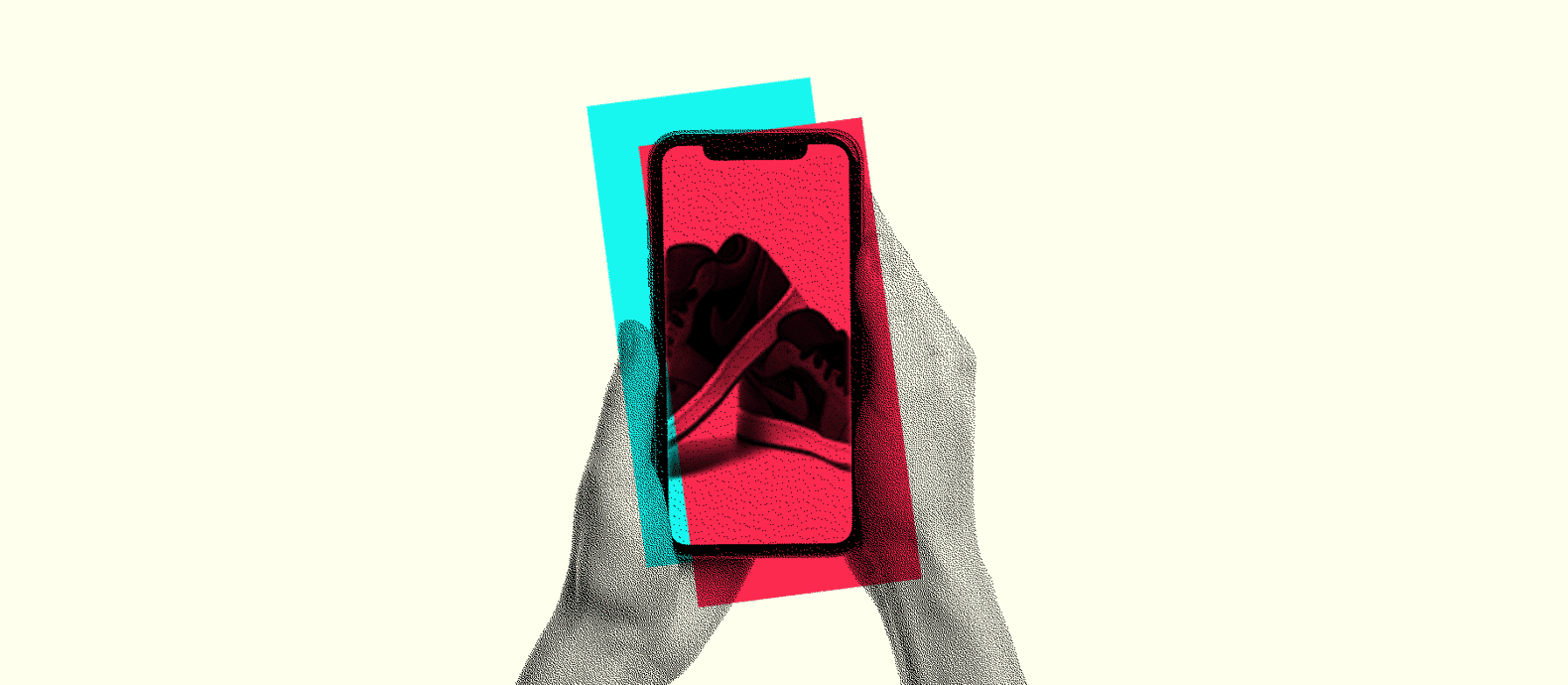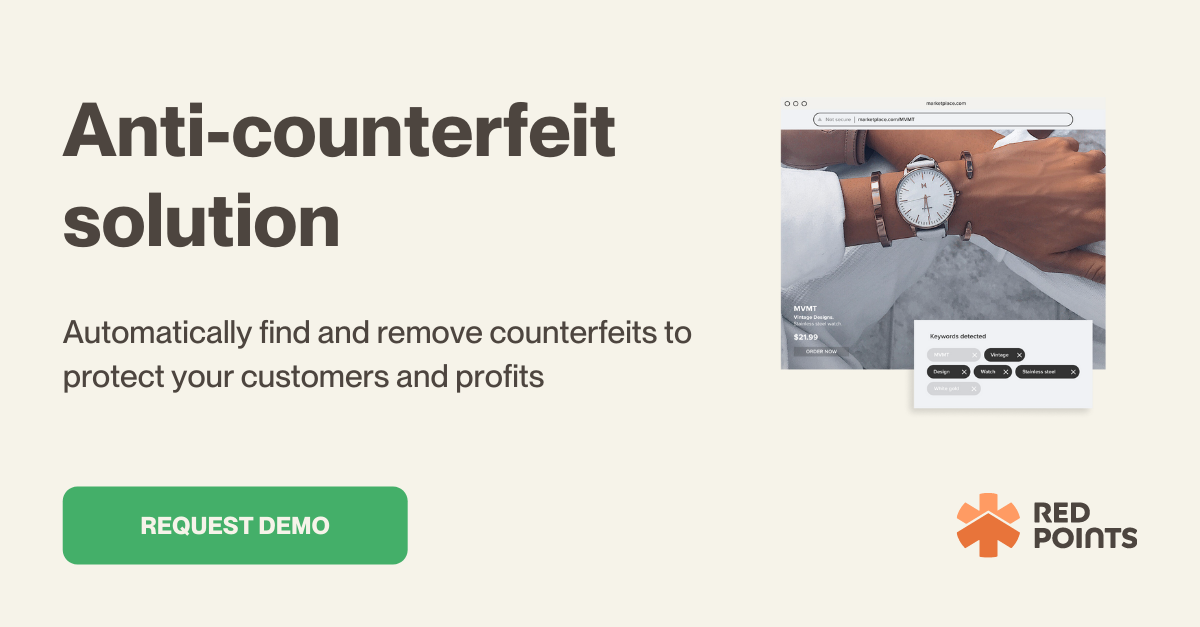
Table of Contents:
Last updated on: March 6, 2024
TikTok trends come and go, but some have more staying power than others. One popular community that has emerged on the social platform is RepTok, the name for a growing segment dedicated to replica products and counterfeit sales.
This phenomenon has caught the attention of brands and consumers alike, as users share and discover replicas of high-demand products. With TikTok’s expansive reach – boasting millions of active users – understanding and addressing RepTok has become crucial for brands that want to protect their integrity and customer trust.
In this article, we will delve into the world of RepTok, outlining strategies for brands to identify and combat counterfeit sales effectively. We’ll explore practical steps and innovative solutions to safeguard brand reputation on TikTok, ensuring readers are equipped with the knowledge to tackle this issue head-on.

RepTok is a niche community within TikTok that revolves around the promotion, discussion, and sharing of information about replica products or counterfeits of high-end, branded items. This term is a portmanteau of “replica” and “TikTok,”.
Users within this community often share videos showcasing their latest finds, providing reviews, and sometimes sharing details on where and how to purchase these replicas. The content can range from fashion items like bags, shoes, and clothing to tech gadgets and luxury goods, all of which are imitations of original, often expensive, branded products.
TikTok is known for its massive user base and highly engaging content format and has inadvertently become a popular medium for the promotion of these counterfeit goods. The algorithm-driven nature of TikTok means that content related to replicas can quickly gain traction, reaching a broad audience interested in buying branded looks or lifestyles at a fraction of the cost.
While this might seem like a harmless trend to some, it poses major challenges for brands in terms of copyright infringement, brand dilution, and consumer deception. RepTok not only affects the perceived value and exclusivity of genuine branded products but also raises concerns about the quality and legality of the items being promoted and sold.
The operation of RepTok and the types of products it circulates present a multifaceted challenge for brands and consumers. It highlights the need for vigilance and proactive measures to protect intellectual property (IP) and ensure consumer safety on TikTok. RepTok operates through a variety of methods that sellers and users employ to promote and sell counterfeit products on TikTok. The platform’s algorithm and social features play a significant role in amplifying the reach of these products.
Here’s how RepTok usually works.
Influential TikTok creators, knowingly or unknowingly, may endorse replica products in their content. Their large followings mean that these endorsements reach a wide audience, lending credibility to counterfeit products.
Sellers often create videos that closely mimic the branding and aesthetic of genuine products, misleading viewers into believing they are purchasing authentic items. These videos can be highly persuasive, showcasing the replicas in a flattering light and emphasizing their similarity to the real products.
Sellers tap into popular hashtags and TikTok trends to gain visibility for their counterfeit products. By aligning their content with trending topics, they can gain a broader reach beyond their immediate followers.
To circumvent TikTok’s policies against selling counterfeit goods, sellers might use coded language or direct viewers to external sites and platforms where sales can occur away from TikTok’s view.
Replica clothing items, including designer dresses, branded t-shirts, and knock-off luxury outerwear, are widely promoted on RepTok. These items often copy the designs and logos of high-end fashion brands.
Counterfeit accessories like handbags, watches, sunglasses, and jewelry are prevalent on RepTok. These replicas often target high-end brands known for their distinctive designs and status symbols.
Tech gadgets, including headphones, smartwatches, and phone accessories are commonly counterfeited and promoted on TikTok, often boasting similar features and aesthetics to the original products.
Replica cosmetics and skincare products are also a significant part of RepTok. These items pose particular risks as they may not adhere to safety standards and regulations, and could be potentially harmful to consumers.
The scope of the problem posed by RepTok extends far beyond just copyright infringement, deeply affecting brands across various industries. The proliferation of counterfeit products on platforms like TikTok not only infringes upon intellectual property rights but also leads to brand dilution, financial losses, and reputational damage.
Counterfeit products infringe on the copyrights, trademarks, and design patents held by brands. This undermines the legal protections that help brands develop innovation and fair competition. This affects a brand’s exclusivity, legal standing, and ability to protect its creations.
The availability of low-cost replicas can dilute a brand’s perceived value and exclusivity. When consumers see widespread counterfeits, the distinctiveness and appeal of owning a genuine product are likely to diminish, which impacts brand equity and loyalty.
The economic impact of counterfeits on brands is significant. Lost sales are just the tip of the iceberg, as the costs associated with fighting counterfeits, including legal fees and brand protection strategies, add to the financial strain. Consumers who unknowingly purchase a counterfeit might also be less likely to invest in the genuine article, assuming that the quality of the fake reflects the true brand standard.
Counterfeit products, which are often of inferior quality to the original, can cause substantial reputational damage. Consumers who are disappointed by the quality of a counterfeit might wrongly attribute their negative experiences to the genuine brand, leading to a loss of consumer trust and loyalty.
Consumers are drawn to replicas for various reasons. Social media platforms like TikTok play a significant role in shaping consumer behavior and decision-making. Understanding why consumers opt for counterfeit products involves exploring the connection between perceived value, social influence, and generational attitudes toward consumption.
The most obvious reason for consumers to gravitate towards replicas is the lower cost compared to genuine products. This allows consumers to access the look and feel of high-end items without the hefty price tag, appealing particularly to those who cannot afford or are unwilling to pay for the real thing.
Replicas make on-trend, high-demand products more accessible to a broader audience. Social media platforms like TikTok amplify this by showcasing these items and providing information on where and how to purchase them.
The endorsement of replicas by popular creators or within peer groups can significantly influence consumer behavior. Social media users often seek to imitate the lifestyles and aesthetics they see online, driving the demand for accessible alternatives to expensive brands.
Some consumers might be unaware of the distinctions between genuine products and high-quality counterfeits, leading them to purchase replicas under the false assumption that they are authentic.
Generational attitudes towards consumption also play a role in the popularity of replicas. Younger generations – Millennials and Gen Z, in particular – are more influenced by social media trends and the desire for brand association.
However, they are also more budget-conscious and value-oriented, making replicas appealing. Younger consumers are also more likely to be aware of and concerned about the ethical implications of their purchases, which can influence their attitudes toward counterfeits.
The purchase of counterfeit products raises several ethical and legal concerns:
To counter the challenges posed by RepTok, brands need to adopt innovative strategies that address the issue of counterfeit sales and engage with the TikTok community in a meaningful way.
Leveraging TikTok’s initiatives for intellectual property protection and understanding the platform’s unique culture and algorithms are key steps in this direction.
TikTok has implemented several measures to protect IP rights and combat counterfeit sales. Brands can leverage these resources by actively monitoring TikTok for infringing content and using TikTok’s reporting mechanisms to take down counterfeit promotions.
To effectively combat RepTok, brands must immerse themselves in TikTok’s culture and understand how its algorithms work.
Brands facing a large number of infringements on popular platforms like TikTok may find it difficult to handle the violations manually. To address this issue, Red Points Social Media Protection offers a highly cost-effective and efficient solution. This service provides an automated monitoring system that continuously scans various social media platforms, including TikTok, to identify content that infringes on a brand’s intellectual property rights. Additionally, brands can report and take down significant amounts of infringing content automatically, which reduces the time and resources required for manual reporting.
With the help of data-driven insights into infringement patterns and trends, brands can refine their protection strategies and develop a better understanding of the scope of the issue.
The importance of continuous vigilance and proactive strategies cannot be overstated. As TikTok continues to evolve, so too will the methods used to promote and sell counterfeit products. Brands must remain adaptable, engaging with their audience in authentic ways while actively monitoring and protecting their intellectual property.
By combining TikTok’s IP protection initiatives with a deep understanding of the platform’s culture and algorithms, and employing specialized services like Red Points Social Media Protection, brands can develop a comprehensive and effective strategy to counter the challenges posed by RepTok.
Take the first step towards securing your brand’s presence on TikTok. Request a demo and discover how our tailored solutions can boost your brand protection strategy, so you can focus on building genuine connections with your audience while we handle the complexities of IP protection.
